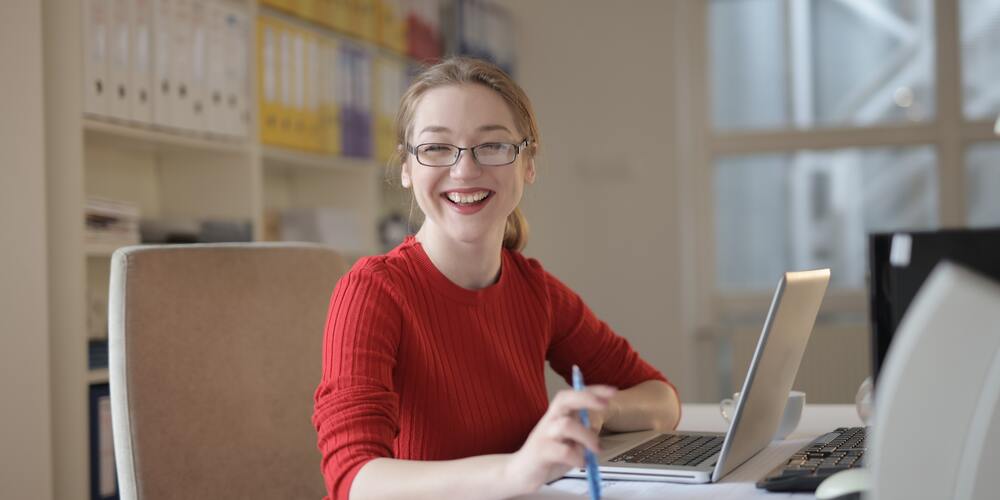Content is a pretty big deal. HubSpot reports that 90% of marketers are using content marketing in their marketing strategies with the goal of “generating brand awareness, building credibility and trust, and educating audiences.” But with so many people in the content game, that means there’s a whole lot of competition for online visibility.
So how do you make your brand stand out? By publishing relatable content.
Consumers are looking for someone who just gets it. They want to feel seen, heard and understood by a brand they can relate to. They want to feel like they’re getting advice from a friend instead of a pitch from a salesperson.
It might seem easier said than done but relatable content is really about three things:
- Making a connection
- Keeping things simple
- Putting problems in context
Make a Connection
We didn’t choose to become a certified StoryBrand agency on a whim. We chose to because the strategy really works. People respond and relate to stories more than anything else, which makes them a powerful method for forging emotional connections.
Think about the last story you read. I bet you were imagining yourself in the protagonist’s shoes the whole time. Narrative content can generate that same feeling in your audience. It puts them at the heart of your brand by making them the hero, which is more engaging and relatable than scanning sales copy.
I’m not saying the goal of every piece of content should be to foster an emotional epiphany, but creating a deeper connection to your reader is important. Your content should help people relate emotions to their problem—frustration, anger, impatience, exhaustion—validate those feelings, then present a solution.
When people feel seen and heard by your brand, it builds trust and credibility. Now you feel more like a friend who wants to help than a brand who wants their business. That goes a long way to building a loyal customer base.
Keep Things Simple
There’s a time and a place to demonstrate detailed knowledge, but for the most part people are looking for the bird’s eye view. Potential customers come to your website from social media or organic search because they have a question and want a clear, concise answer.
This tip is especially helpful in complex industries, such as finance or insurance. It’s tempting to think that more detailed content is better content in these fields because you’re giving more information. Right?
Actually, no. Too much detail on complex topics can cause information overload and confuse your readers further. Instead, content creators should focus on zooming out a bit and targeting the bigger bullet points. The goal is to leave people thinking, “Oh, it’s that simple!”
A great example of keeping it simple is Rocket Mortgage’s blog. The housing industry is notoriously complex and can be intimidating for first-time buyers or sellers. Instead of packing their blogs with industry jargon and financial terms, Rocket Mortgage focused their content strategy on relatability. Their blogs break down big topics into small pieces the average consumer can understand. This makes them a valuable resource to buyers and sellers alike, which builds trust in their brand and increases the likelihood readers will choose to work with them.
Check out the below example of their intro to an educational blog about mortgages.
Put Problems in Context
Examples and analogies are powerful tools when you’re trying to relate complex information. They fit nicely within a narrative format and provide an opportunity to present information in a way the reader can identify with. It’s a way of taking a solution that’s only existed in their mind and making it real.
You can use examples throughout your content to help orient your reader and give them a taste of your topic in action. (Like I did with that Rocket Mortgage link in the previous section.) You can also use testimonials to show potential customers how your product or service benefits people in real life.
Analogies are another great option for relating content to your audience. The human brain has been referred to as an “analogy machine.” It’s how we make sense of the world, by relating things to each other and finding the similarities or patterns in our lives. If you can take someone’s problem and liken it to something they’re familiar with, then you can forge a powerful connection in their brain that helps them better understand the purpose of your brand.
Reach Your Readers
Instead of grabbing for the next trending topic, focus on making your content more relatable for readers. When you can make a connection, simplify complex topics and put their problems in context, it helps them understand what they’re facing and how you can help.
Check out this blog to learn what types of content can best engage your readers and keep them moving through your website.







